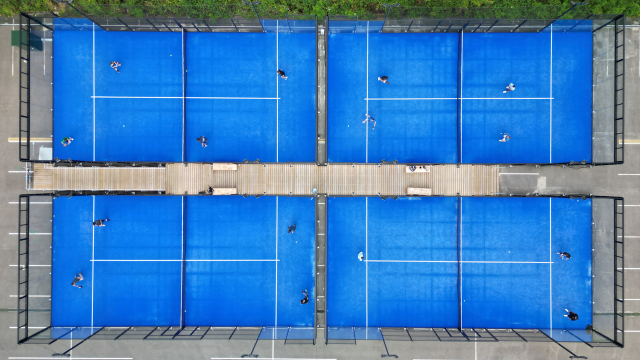
“Picture tennis doubles” and then “increase the intensity by around 15%”, said Marie Le Conte in The Observer. Padel is taking the world of sport by storm, with players of all skill levels romping across its “claustrophobic” courts wielding rackets akin to “those zappy things you can use to obliterate mosquitoes”.
Described by the Lawn Tennis Association last year as the world’s fastest-growing sport, padel originated in Mexico in 1969. Enrique and Viviana Corcuera wanted to build a tennis court in their backyard in Acapulco but didn’t have quite enough space. A smaller space surrounded by a wall soon became the world’s first padel court.
Almost 50 years later, padel is played by more than 30 million amateurs in nearly 150 countries, according to the International Padel Federation. In Britain, around 1,500 courts have sprung up since the start of the pandemic – a “exponential pattern of growth” that could see it “overtake tennis in Britain just as it already has in Spain”, said The Telegraph.
‘Magnetism of padel’
Part of padel’s appeal is its accessibility – “absolute beginners can enjoy a match within minutes of picking up a bat”. Players “tend to be more exuberant” and the game more approachable. “It’s a fun sport, a very sociable sport,” said Jamie Murray, one of Britain’s leading tennis doubles players. “It’s a lot easier to get started in the game than tennis.”
And demand for the sport defies its lofty price point. While public tennis courts can be used for as little as £5 per hour, or even for free for those willing to provide their own equipment, padel court hire typically starts at around £30 an hour, and can go much higher. But “the magnetism of padel” is such that hundreds of thousands of people played the sport at least once last year.
“There’s no glory” in getting into long-established sports like football or rugby as an adult, but attending a padel match for the first time “felt like an opportunity to get in on the ground floor”, said Le Conte. But even if there was something charming about the atmosphere, “I have to confess, somewhat guiltily, that I do prefer the glitz and glamour” of tennis.
‘Like a rifle shot’
“As a self-confessed tennis head” who thought padel might feel familiar, “I imagined a game close to squash but with the lightness of ping pong and the clipped etiquette of tennis”, said Arabella Byrne in The Spectator. “How wrong I was.”
The lenient scoring system takes away the tension, while players “grunt and lurch around holding carbon fibre bats that look like squashed colanders”. The whole spectacle “is deeply uncivilised, like a dinner party with paper plates”.
But this hasn’t stopped celebrities like David Beckham, Prince William and Lionel Messi from picking up a racket at a time when tennis and squash are diminishing in popularity. Padel “must be doing something right”, however, said Byrne. “Its low barriers to entry” give it a broad appeal and even the promise of “accessible flirting”.
However, the appeal of padel is lost on some residents living close to the newly erected courts appearing up and down the country. Padel involves firing plastic balls into glass walls, a combination that produces a loud, sometimes jarring noise.
“We’ve had tennis courts here for years and they’re brilliant,” Bob Wilkinson, a Harrogate resident who lives near a recently opened padel court, told BBC Radio York. “Padel courts, it’s like a rifle shot.”
Smaller courts than tennis, thicker rackets than pickleball and glass walls on all sides – padel is enjoying a huge rise in popularity






